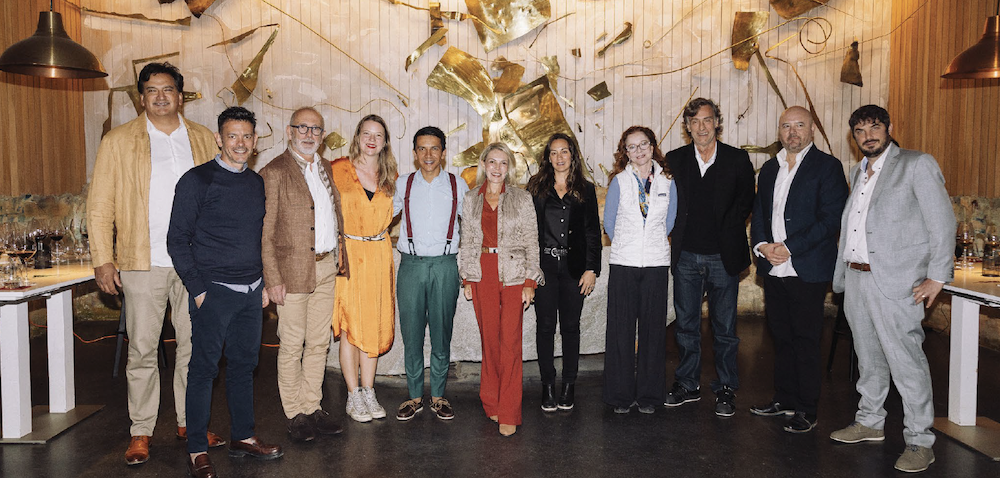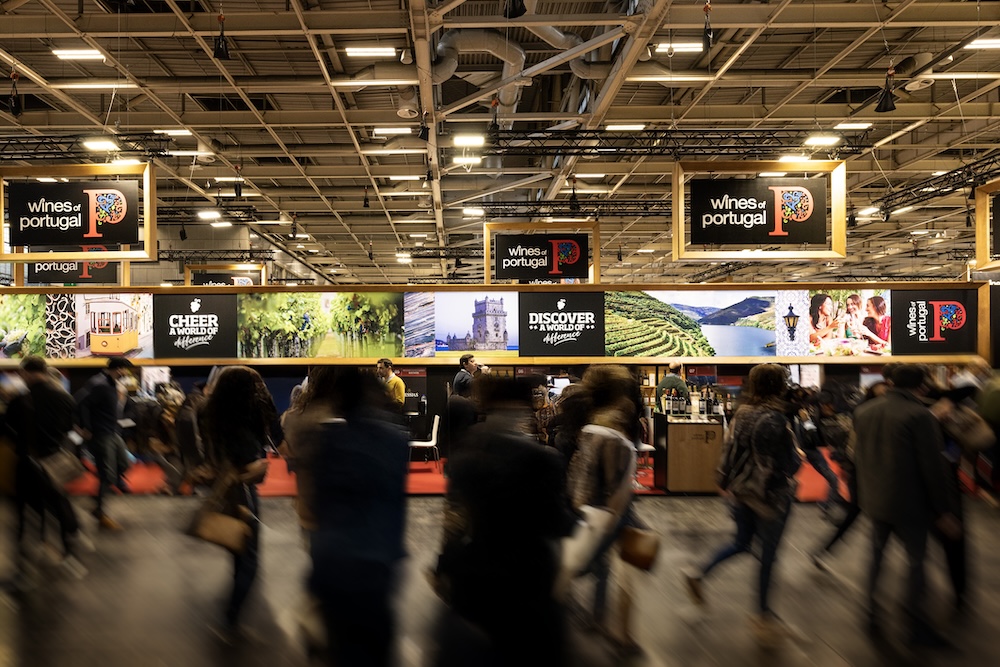
Discovery

Discovery
By Isabelle Escande - Photographs: courtesy of the estates, posted on 31 October 2022
The Castilla y Leon region, in North-West Spain, is replete with famous appellations such as Ribera del Duero, Toro, Cigales and Rueda – lining the banks of the river Duero and producing some of the country’s finest wines.
Despite its long-standing tradition of growing wine, the Castilla y Leon region made its debut in the international wine market relatively late on. The low yields from its vineyards due to the area’s weather patterns along with direct competition from neighbouring regions prevented it from developing a powerful wine industry.
But the drivers that guaranteed success in an era of industrial wines have become obsolete. Nowadays, low-cropping vines are synonymous with quality and small family-run bodegas that have benefited from new consumer standards are favoured over large groups. The bodegas have been modernised and equipped with cutting-edge technology, though they have not drawn a line under tradition, far from it. Many of them continue to choose bush vine training and harvesting by hand, or have worked to preserve native grape varieties. Although Tempranillo and its various avatars (Tinta del Pais, Tinto de Toro etc) still occupy a prime position in Castilla y Leon’s varietal range, they are not the only ones to have established their pedigree. Illustrations of this are provided by Mencia in the Bierzo appellation and Verdejo, the star of Rueda, which produces wines displaying crisp acidity and delicate aromas.
The region’s wine proposition is multi-faceted, spanning a wide range of styles. They often encapsulate their maker’s signature style and the stamp of the terroir where they were born, making them easy to identify in comparison to other wines. We have selected five bodegas so that you can be the judge of this by tasting their amazing wines.
Although the five Descalzo Matos brothers and sisters - Luis Alfonso, Roberto, Ana, David and Miguel – each bring with them over 20 years’ experience in the wine industry, it was not until 2015 that they decided to produce their own wines and create Bodegas La Granadilla, in the heart of the Rueda DO, Castilla y Leon’s oldest appellation. Their bottlings now rank among the most highly renowned in the region.
Crafted entirely from estate-grown fruit, they mirror the style of the bodega, which is young and innovative but also boasts extensive expertise. “Our main priority lies in the quality of the grapes”, shares Ana. “Our 104 hectares of vines are grown with the utmost care. One third of the vineyard is certified organic and the remainder borders on organic because we rate respect for the environment and sustainability very highly”.
70% of the vineyards are planted to Verdejo, but the variety shows very different characteristics depending on the blocks where it is grown, explains the bodega’s technical director, Roberto Descalzo Matos. “Verdejo from La Granadilla is more powerful on the palate with higher alcohol than the same variety from Nava, which is fresher and fruitier. Fruit from La Garbancera is more rounded and balanced”. The grapes are then judiciously blended to produce wines that appeal both to the national and international marketplace.
Wine was being made in the Toro region even before the Romans entered Spain, and in the Middle Ages, they were so highly rated that they were chosen to fill the holds of La Niña, La Pinta and La Santa-María and accompany Christopher Columbus on his journey to the New World, explains Eduardo Casas, the fourth generation to helm Bodegas Francisco Casas. The family-run company has been based in Morales de Toro for over fifty years.
Gifted with intense spicy black fruit aromas and a beautiful dark hue with purple reflections, Toro wines inevitably make an impression. Made primarily from Tinta de Toro, a cousin to Tempranillo, they display a seductive mineral touch that flows into ripe fruit notes after a long stay in casks. “The wines are fleshy and robust with soft tannins and offer great persistency on the palate”, adds Casas.
When asked what drives the quality of the wines, he immediately points to the grape growers who work for the bodega. They farm their bush-trained vines traditionally with expert knowledge of the terroir and yields that are capped at 5,000 kilos per hectare. In addition to this, of course, is the winemaking team headed up by Jesús Garcia Alvarez who now masterfully manages production and maturation of the wines after working internationally, in Bordeaux and Chile.
The experienced team at Bodegas Francisco Casas focuses on responsible winemaking techniques and was recently awarded IFS certification*. It now aims to reduce the bodega’s emissions by 50% and use materials from renewable sources because a quality-driven approach automatically entails a commitment to the future.
*IFS certification is a prerequisite for marketing wines in super and hypermarkets and certifies the quality and safety of food products.

![Jesús Garcia Alvarez, the company’s winemaker.]](https://gilbertgaillard.s3.eu-west-3.amazonaws.com/storage/cms_images/mag-XLIX/CASTILLA-LEON/635f9a016625f.jpeg)
Anfiteatro, Platea, Balcón, Gallinero – or amphitheatre, parterre, balcony and gallery – are all names of vineyards at the Valdemonjas bodega. They refer to the various parts of a theatre and are evocative of the winery’s vision of winegrowing. More than just a farming activity, it is all about the art of showcasing a terroir. “Wine and art are our two passions. We have never been able to consider them separately”, admits Alexis Moyano Agüera, son of the bodega’s founder.

Although the estate itself was established in 2012, the Moyano Agüera family actually started making wine in Ribera in 1998 when it planted its first vineyard, Pago de Valdemonjas, whose seven hectares of Tempranillo vines are certified organic. The vineyard is home to a range of soil types, inclines and aspects and is divided into small blocks that are farmed separately. “Each one of them brings us something special”, says Moyano Agüera. “The lowest blocks offer freshness, vigour and fruit, whilst the highest ones provide elegance, power and ripeness”.
In 2009, the property was extended through the purchase of a small vineyard of old vines – nearly one hundred years old – El Nogal de la Valera, which is also farmed organically. “The wines from this site are powerful, elegant and long on the palate and require virtually no intervention because the fruit improves from one year to the next”.
Another landmark moment in the family’s winegrowing venture was when the winery itself was built in 2015 at the Valdemonjas estate. Surrounded by vineyards, it fits perfectly into its natural surroundings. Designed to reduce its impact on the environment to a minimum, the eco-sustainable building received two awards at the 2016 Architizer A+Awards. It allows the family and the team to produce 95% of their own electricity and to harvest rainwater. Ultimately, the art of winegrowing is not only about enhancing site-expressiveness but also “being capable of passing the site on to future generations in a condition as good as or better than we found it”. It’s certainly a project that is not for the faint-hearted!

“Treating the unique features of our base material – Tempranillo – with respect was the real starting point of our project”, explains bodega director Camino Pardo. At the time, the company was already producing wines in the Toro DO, but in the 2000s decided to complement its range by creating Bodegas Nexus where 40 hectares are entirely planted to Tempranillo right in the heart of Ribera del Duero.
But whilst the grape variety is a core component, the focus is also and more importantly on terroir. The banks of the river Duero yield warm fruit “whose perfume pervades the very air we breathe”, a unique feature that stems from the site itself. “The poor soils, the scarce water supply and the extreme climate enable us to produce unique wines”, points out the winemaker. “These are appetising, elegant and silky wines with soft tannins and a joyful persona that stay fresh over time”.
In just a few years, the bodega has successfully carved out an international reputation for itself and is now marketed in around twenty different countries. It continues to innovate and recently launched a natural Spanish kosher wine made in strict compliance with Jewish food rules.

Situated in Cubillas de Santa Marta, in DO Cigales, the Santa Rufina bodega has chosen to favour red wine production since its inception. In the past, though, the region virtually only produced rosés, which were famous for their unusual winemaking technique of blending red and white grape varieties.
Whilst Cigales producers have in recent years begun making red wines, the bodega itself has not changed its priorities – red wines account for 85% of its sales currently – but rather perfected the art of blending. A Gran Reserva, matured for 36 months in casks, was released this year in fact, explains Blanca García, daughter of the company’s founder, with obvious pride.
Bodegas Santa Rufina is indeed a family affair. Founded in 1997, the estate is named after Blanca’s grandmother, who passed away when her father was still a child, says García. The bodega’s vines are extremely old – 40% of them are one hundred years old – and they extend over 90 hectares. Year-round care and attention is lavished on them.
At Santa Rufina, quality has always been favoured over quantity. In fact, the winery has held onto to some traditional winemaking techniques and opted for limited mechanisation. The grapes are picked by hand, “which makes it easier to preserve the integrity and impeccable quality of the fruit”, all of which is estate-grown. “This in turn makes it easier to make good wine”, says García, and when you taste the bodega’s characterful pours, you have to agree.


Discovery

Discovery

Discovery